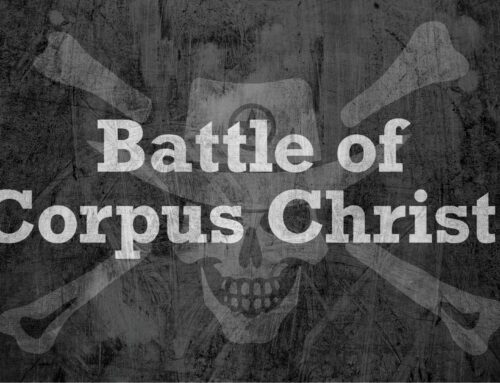Texas Declaration of Independence
Introduction
The Texas Declaration of Independence, a pivotal document in American history, marked the formal separation of Texas from Mexico. This declaration, drafted and signed in 1836, was a response to growing tensions and dissatisfaction with Mexican rule. Understanding this document and its historical context is crucial for appreciating the roots of Texan independence and its lasting impact on the region’s identity and legacy.
Historical Context
Texas Under Mexican Rule
In the early 19th century, Texas was a part of Mexico, which had recently gained independence from Spain. Initially, Mexico encouraged American settlers to colonize Texas, hoping to develop the sparsely populated region. However, cultural differences, political disagreements, and economic conflicts soon emerged, leading to widespread dissatisfaction among Texan settlers.
Key Events Leading to the Declaration
- Law of April 6, 1830: This Mexican law aimed to curb American immigration and increase Mexican influence in Texas, causing significant resentment among settlers.
- The Fredonian Rebellion (1826): An early attempt by settlers to declare independence from Mexico, highlighting the growing unrest.
- Anahuac Disturbances (1832 and 1835): Conflicts between settlers and Mexican authorities over issues such as tariffs and judicial practices.
- Battle of Gonzales (October 2, 1835): Often considered the first battle of the Texas Revolution, it sparked widespread rebellion against Mexican rule.
The Convention of 1836
Description of the Convention
The Convention of 1836 took place at Washington-on-the-Brazos, where 59 delegates gathered to draft the Texas Declaration of Independence. This convention was a crucial moment in Texan history, bringing together representatives from across the region to discuss their grievances and chart a path to independence.
Key Figures
- Sam Houston: A military leader and future president of the Republic of Texas.
- Lorenzo de Zavala: A Mexican statesman who supported Texan independence.
- George C. Childress: Credited with drafting the declaration.
Drafting and Signing the Declaration
The Drafting Process
George C. Childress is often credited with drafting the Texas Declaration of Independence. The document was heavily influenced by the United States Declaration of Independence, reflecting the settlers’ desire for similar freedoms and governance.
Overview of the Signatories
The declaration was signed by 59 delegates, representing various settlements in Texas. These signatories risked their lives and property to support the cause of independence, showcasing their commitment to a free Texas.
Date and Circumstances of the Signing
The Texas Declaration of Independence was signed on March 2, 1836, amidst the backdrop of the Texas Revolution. The urgency of the situation required swift action, and the delegates at Washington-on-the-Brazos acted decisively to formalize their break from Mexico.
Content of the Declaration
Summary of Key Points
- The suspension of constitutional rights and freedoms.
- The lack of representation for Texans in the Mexican government.
- The arbitrary and oppressive actions of Mexican authorities.
Analysis of the Language and Rhetoric
The language of the Texas Declaration of Independence is passionate and assertive, reflecting the urgency and gravity of the situation. It draws heavily on the rhetoric of natural rights and self-determination, mirroring the philosophical foundations of the American Revolution.
Impact and Immediate Consequences
Reaction Within Texas and Mexico
The declaration galvanized support for the Texan cause, uniting settlers under a common banner of independence. In Mexico, the declaration was met with outrage, prompting a military response aimed at quelling the rebellion.
Short-term Consequences for the Texas Revolution
The declaration marked a turning point in the Texas Revolution, solidifying the resolve of Texan forces. Key battles following the declaration, such as the Alamo and the Battle of San Jacinto, were fought with the clear goal of securing Texan independence.
Role in Garnering Support
The Texas Declaration of Independence played a crucial role in attracting support from the United States and other sympathetic entities. It framed the Texan struggle as a fight for liberty and self-governance, resonating with broader American values.
Long-term Significance
Shaping Texas History
The declaration laid the foundation for the Republic of Texas, which existed as an independent nation from 1836 to 1845. It established a framework for governance and civil rights that would influence Texas’ subsequent integration into the United States.
Influence on Texan Identity
The values and ideals expressed in the declaration have become central to Texan identity. The spirit of independence, resilience, and self-reliance continues to define Texas culture and politics.
Commemoration and Preservation Efforts
Texas Independence Day, celebrated annually on March 2, commemorates the signing of the declaration. Various historical sites, such as the Washington-on-the-Brazos State Historic Site, preserve the legacy of this pivotal event.
Declaration of Independence Key Figures
Sam Houston
Sam Houston was a prominent military leader and politician who played a critical role in the Texas Revolution and the early Republic of Texas. His leadership at the Battle of San Jacinto secured Texan independence, and he later served as the first and third president of the Republic of Texas. Houston’s dedication to the Texan cause and his political acumen were instrumental in shaping the newly independent region.
Lorenzo de Zavala
Lorenzo de Zavala was a Mexican statesman who supported Texan independence and served as the first vice president of the Republic of Texas. His diplomatic and political skills were crucial in garnering support for the Texan cause, both domestically and internationally. Zavala’s vision for an independent Texas was deeply rooted in his belief in democratic principles and individual liberties.
George C. Childress
George C. Childress is often credited with drafting the Texas Declaration of Independence. As a skilled lawyer and statesman, Childress brought clarity and urgency to the document, encapsulating the grievances and aspirations of the Texan settlers. His work laid the foundation for Texas’ bid for independence and remains a significant part of its historical narrative.
James Fannin
James Fannin was a key military figure in the Texas Revolution. Despite facing numerous challenges, his leadership and sacrifice at the Battle of Coleto Creek and the subsequent Goliad Massacre galvanized Texan forces and underscored the seriousness of their struggle for independence. Fannin’s bravery and dedication are remembered as pivotal in the fight for Texas’ freedom.
William B. Travis
William B. Travis, a lawyer and soldier, is best known for his leadership during the Battle of the Alamo. His famous letter, appealing for reinforcements and expressing a resolute commitment to the cause, has become an enduring symbol of Texan bravery and resolve. Travis’ actions at the Alamo inspired many and underscored the sacrifices made for Texan independence.
Stephen F. Austin
Stephen F. Austin, often referred to as the “Father of Texas,” played a crucial role in the early colonization of Texas and its subsequent push for independence. As an influential leader, he advocated for Texan rights and governance, helping to lay the groundwork for the independence movement. Austin’s diplomatic efforts and vision for Texas were vital in shaping its early development.
José Antonio Navarro
José Antonio Navarro was a significant political figure who strongly supported Texan independence. As one of the few native Tejanos to sign the declaration, Navarro’s participation highlighted the diverse support for independence within Texas. His continued advocacy for the rights of Tejanos and his involvement in the formation of the Republic of Texas were crucial in ensuring a more inclusive vision for the new nation.
Juan Seguín
Juan Seguín was a military and political leader who played a pivotal role in the Texas Revolution. As a Tejano, Seguín’s involvement exemplified the diverse support for independence. He fought bravely at the Battle of the Alamo and later at the Battle of San Jacinto, contributing significantly to the Texan victory. Seguín’s leadership and commitment to the cause were instrumental in the fight for freedom.
David G. Burnet
David G. Burnet served as the interim president of the Republic of Texas following the declaration. His leadership during this transitional period was essential in establishing the administrative and governmental framework for the new republic. Burnet’s contributions helped stabilize the fledgling nation and set the stage for its future development.
Thomas Rusk
Thomas Rusk was a key military leader and later served as the Secretary of War for the Republic of Texas. His strategic acumen and leadership were vital in organizing and leading Texan forces during critical battles. Rusk’s contributions extended beyond the battlefield, as he played a significant role in shaping the political and legal foundations of the Republic of Texas.
Davy Crockett
Davy Crockett, a famed frontiersman, congressman, and folk hero, played a significant role in the Texas Revolution. Known for his larger-than-life persona and adventurous spirit, Crockett’s decision to join the Texan cause highlighted his commitment to liberty and independence. He arrived in Texas in early 1836 and quickly joined the defenders of the Alamo. Crockett’s bravery and ultimate sacrifice at the Battle of the Alamo made him a symbol of heroic resistance and an enduring legend in American history. His legacy continues to inspire those who value courage and the fight for freedom.
Historical Sites and Memorials
Washington-on-the-Brazos State Historic Site
This site, known as the “Birthplace of Texas,” preserves the location where the Texas Declaration of Independence was drafted and signed. Visitors can explore the Star of the Republic Museum and the Barrington Living History Farm to learn more about early Texas history.
The Alamo
While primarily known for the famous battle, the Alamo also serves as a symbol of the Texan struggle for independence and the ideals expressed in the declaration.
San Jacinto Battlefield
The San Jacinto Battlefield is the site of the decisive Battle of San Jacinto, where Texan forces led by Sam Houston defeated the Mexican army, effectively securing Texas’ independence. The San Jacinto Monument, a 567-foot column, commemorates this pivotal victory. Visitors can explore the battlegrounds and the nearby San Jacinto Museum of History.
Goliad
Goliad holds significant historical importance as the site of the Goliad Massacre, where James Fannin and his men were executed by Mexican forces. The Presidio La Bahía, a fort in Goliad, and the nearby Fannin Memorial Monument honor the sacrifice of these Texan revolutionaries. Goliad State Park and Historic Site offer further insights into the events and people involved in the Texas Revolution.
Gonzales
Gonzales is known as the site of the first skirmish of the Texas Revolution, famously symbolized by the “Come and Take It” cannon. The Gonzales Memorial Museum and the Pioneer Village Living History Center provide detailed accounts of the early battles and the overall Texan fight for independence.
Further Reading and Resources
- Books: “Sam Houston and the American Southwest” by Randolph B. Campbell, “Lone Star Nation: The Epic Story of the Battle for Texas Independence” by H.W. Brands.
- Articles: Articles from the Texas State Historical Association and scholarly journals on Texan history.
- Documentaries: “The Alamo” (PBS), “Texas Rising” (History Channel).
Conclusion
The Texas Declaration of Independence is more than just a historical document; it is a testament to the enduring spirit of freedom and self-determination. Its legacy continues to shape Texas, reminding us of the sacrifices made for independence and the values that define Texan identity.





